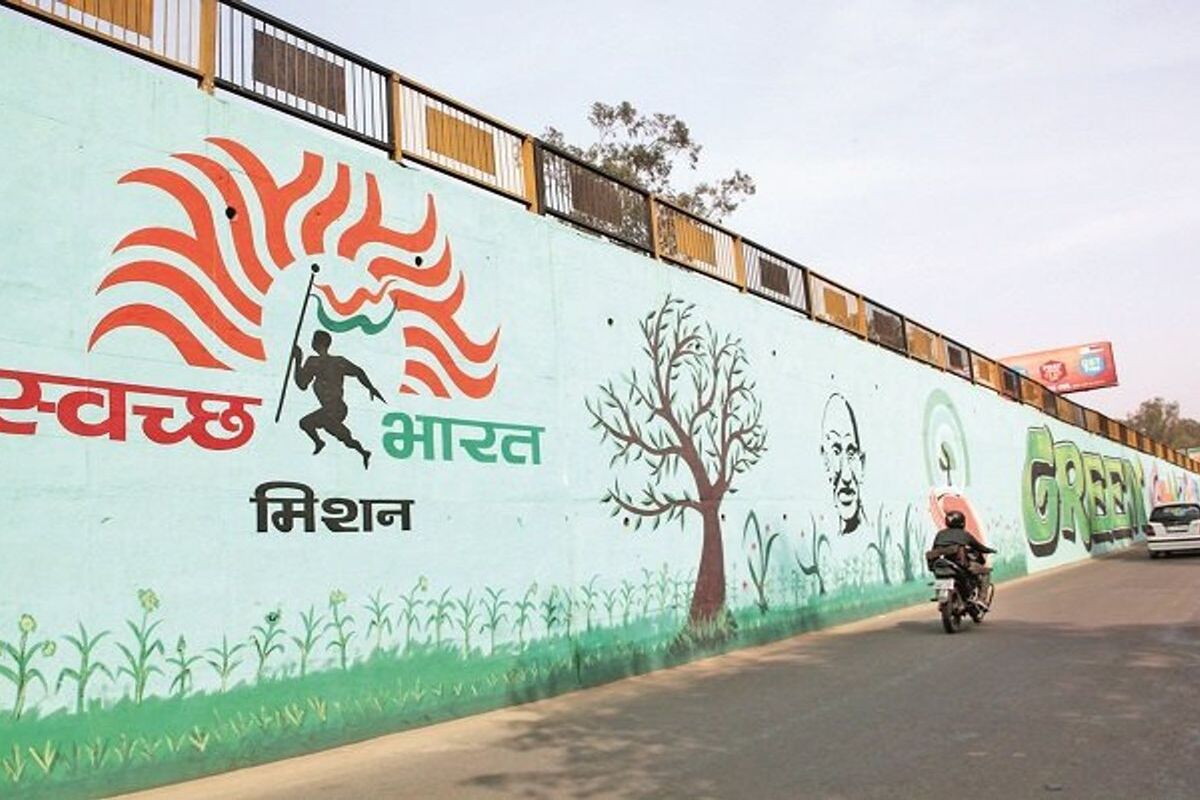Public opinion across the country in favour of Modi Govt: Yogi
The UP chief minister said under the leadership of PM Modi, India has provided the world with a model of good governance along with a secure environment in the country.
Citizens from all walks of life reciprocated with immense enthusiasm taking the ownership for Swachh Bharat. As a result, swachhata became a national behavior and Swachh Bharat Mission became a household name.

The Narendra Modi government has accorded the highest priority to the largest sanitation drive – Swachh Bharat Mission during nine years of its governance.
There has been a renaissance of swachhata in India over the last nine years after the launch of the Swachh Bharat Mission. The sensitization and emotion for making one’s nation clean is reverberating throughout the country.
Nine years ago, Prime Minister Narendra Modi gave a clarion call for swachhata in 2014. Citizens from all walks of life reciprocated with immense enthusiasm taking the ownership for Swachh Bharat. As a result, swachhata became a national behavior and Swachh Bharat Mission became a household name.
Advertisement
The country has achieved yet another major milestone under the Swachh Bharat Mission (Grameen) Phase II with three-fourth of the total villages in the country i.e., 75 per cent villages achieving ODF Plus status under Phase II of the Mission. An ODF Plus village is one which has sustained its Open Defecation Free (ODF) status along with implementing either solid or liquid waste management systems. As on date, more than 4.43 lakh villages have declared themselves ODF Plus, which is a significant step towards achieving the SBM-G phase II goals by 2024-25.
The top performing States/UTs which have achieved 100 per cent ODF Plus villages are – Andaman & Nicobar Islands, D&N Haveli, Goa, Gujarat, Himachal Pradesh, Jammu & Kashmir, Karnataka, Kerala, Ladakh, Puducherry, Sikkim, Tamil Nadu, Telangana, and Tripura. Among States/ UTs – Andaman & Nicobar Islands, Dadra Nagar Haveli & Daman Diu, Jammu & Kashmir and Sikkim have 100 per cent ODF Plus Model villages. These States & UTs have shown remarkable progress in achieving the ODF Plus status, and their efforts have been instrumental in reaching this milestone.
This year marks nine years of the Swachh Bharat Mission. The achievement of 75 per cent ODF Plus villages is a significant milestone for India, as the country has moved from ODF to ODF Plus in Swachh Bharat Mission Phase II.
The major components of the Phase-II of SBM (G) are Sustaining Open Defecation Free Status (ODF-S), Solid (Bio-degradable) Waste Management, Plastic Waste Management (PWM), Liquid Waste Management (LWM), Faecal Sludge Management (FSM), GOBARdhan, Information Education and Communication/Behavior Change Communication (IEC/BCC) and Capacity Building.
The SBM-G programme has been instrumental in improving the health and well-being of millions of people across the country. An ODF Plus Model village is one which is sustaining its ODF status and has arrangements for both Solid Waste Management and Liquid Waste Management; and observes visual cleanliness, i.e., minimal litter, minimal stagnant wastewater, no plastic waste dump in public places; and displays ODF Plus Information, Education & Communication (IEC) messages.
Union Housing and Urban Affairs Minister Hardeep Singh Puri has said when the Prime Minister announced the Swachh Bharat Mission from the ramparts of the Red Fort on August 15, 2014, such a large-scale transformation had never been imagined before. Despite a poor performance on sanitation till then, India achieved the target of ODF in the next five years. All 4,884 ULBs (100 per cent) in India are now Open Defecation Free (ODF).
Talking about the transformation brought by SBM, Puri said by building 73.62 lakh toilets (67.1 lakh individual household toilets and 6.52 lakh community and public toilets), we have provided dignity and health to millions of urban poor. 95 per cent wards in India have 100 per cent door-to-door collection of waste. More than 88 per cent of the wards have source segregation of waste. This was possible because the Swachh Bharat Mission evolved to become a ‘Jan Andolan’ instead of a typical sarkari programme, he added.
Puri emphasised that the Swachhata has become a foundational tenet in not just every government scheme but also in the way of life of citizens.
Drawing attention to the achievements of SBM so far, he said 12 crore toilets have been built in the last nine years, liberating the country from the scourge of open defecation.
He further informed that the urban component of the mission has now been extended till 2026 through the Swachh Bharat Mission – Urban 2.0 (SBM-U 2.0). It aims to make all our cities ‘Garbage Free’ and remediate legacy dumpsites. The focus areas of SBM-U 2.0 encompass a range of aspects, including Material Recovery Facilities (MRFs), Waste-to-Energy plants (WtE plants), construction and demolition waste management, Refuse Derived Fuel (RDF) plants, scientific landfill sites, and the remediation of legacy waste.
Advertisement